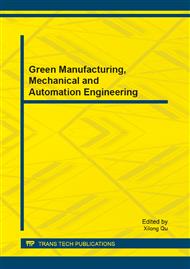[1]
Li Xiang-Bin, Wang Guo-Yu, Zhang Bo et al. Evaluation of the RNG k-ε model on the numerical simulations of supercavitating flows around a hydrofoil. Chinese Journal of Hydrodynamics . (2008).
Google Scholar
[2]
Fu Yuan-fang. Numerical simulation on the process of a car overtaking a tractor-trailer truck. . (2006).
Google Scholar
[3]
Wang De-Chang, Du Guang-sheng, WU Jing-yi. Numerical experimental study on the 3-D flow field around a van with a dome for energy saving. Energy Conversion and Management . (2005).
DOI: 10.1016/j.enconman.2004.06.014
Google Scholar
[4]
Chang Lu. Study on virtual test of power performance, fuel economy and ride comfort of mining dump truck. . (2007).
Google Scholar
[5]
Castellucci P. J, Salari K. Computational simulation of tractor-trailer gap flow with drag-reducing aerodynamic devices. SAE Paper, 2005-01-3625 . (2005).
DOI: 10.4271/2005-01-3625
Google Scholar
[6]
XI Shu-cai, LI Xiao-chun. Developing prospects of domestic mining dump truck. Journal of China Cement . (2004).
Google Scholar
[7]
Mccallen R, Flowers D, Dunn T. et al. Aerodynamic drag of heavy vehicles (Class 7-8): Simulation and benchmarking. SAE Paper, 2000-01-2209 . (2000).
DOI: 10.4271/2000-01-2209
Google Scholar
[8]
Mccallen R, Salari K, Ortega J. Et al. DOE's effort to reduce truck aerodynamic drag through joint experiments and computations. SAE Paper, 2005-01-3511 . (2005).
DOI: 10.4271/2005-01-3511
Google Scholar
[9]
ENGLAR R. J. Improved pneumatic aerodynamics for drag heduction, fuel economy, safety and stability increase for heavy vehicles. SAE Paper, 2005-01-3627. (2005).
DOI: 10.4271/2005-01-3627
Google Scholar
[10]
Bayraktar I, Landman D, Cary W. K. et al. An assessment of drag reduction devices for heavy trucks using design of experiments and computational fluid dynamics. SAE Paper, 2005-01-3526.
DOI: 10.4271/2005-01-3526
Google Scholar
[11]
FrangopolDanM, LiuMin. Maintenance and management of civil infrastructure based on condition, safety, optimization, and life-cycle cost . Structure and Infrastructure Engineering, 2007, 3 (1): 29-41.
DOI: 10.1080/15732470500253164
Google Scholar


